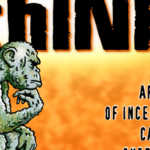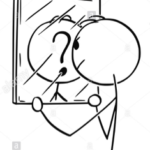A typical design project mentoring session begins with the professor pointing out to the visuals presented by the student and enquiring
- What more options do you have?
- Did you think through the problem solutions we discussed, to improve on your design solutions?
- Find the challenges in your design solutions.
DID YOU REFLECT ON YOUR SOLUTIONS……….??? ARE YOU BEING A REFLECTIVE DESIGNER
By now the student is in a state of flux ready to throw in the line, topple the table, or shrug the shoulders and walk off….
 thinkbook.org
thinkbook.org
…..all the while thinking under the breadth, ‘Who wants to go over again the discussion on finding more gaps in the designed product’? Didn’t I stay awake the whole night, forego the movie I’ve been dying to see, working on my design? Ask my parents, how I’ve put all my energy in this design, made lovingly, passionately, they’ll vouch for it.
No doubt these are some very genuine thoughts of the design student but before the frustration tips over into demotivation of the learner and extreme steps such abandonment of the project, this experience can be flipped into a positive methodology in learning.
The process of reflection during design development can form the foundation of exploration at every step allowing the design to progress only when the reflective process has satisfied the many questions raised.
In many instances, such as in an exam situation, very often students are heard wishing, that if only they were given a second chance they would have tweaked the solution differently or they would have considered the answer differently.
It seemed, given the opportunity of a second chance, they would have collected their thoughts, stepped back, taken a wider view, considered the context deeply, looked back at possible gaps, how it could have been resolved and after having carefully reflected on the possibilities, suggest solutions to the design problem differently……… now.
As Confucius philosophized, ‘Learning without reflection is a waste. Reflection without learning is dangerous’.
REFLECTION IS INTEGRAL TO DESIGN PROCESS
Reflection is a process of thinking again about the subject matter, now with a renewed sense of security, having undertaken and finished a task, the first time experiencing unsurety, insecurity and hesitancy.

When designers start with initial concepts, whether it be a simple project of developing a form or a complex project developing the corporate identity of a brand, the apprehensions remains the same as the excitement and anticipation. When reflective practice is adopted at all stages of development, it enables deeper exploration and fitment of the solution to the required brief.
Reflection at stages ensures better choices of pathways, more aligned progress and ultimately leads to more appropriate solutions.
REFLECTIVE PRACTICE & ITS EFFECTIVENESS
During the process of design development, maintain a documentation and categorization of the data, the explorations and its context throughout the process
Repeated self questioning can lead to clarity of problem brief which is already half the problem solved.
Provide room for open critique and a healthy adaptation of aligning it to the design problem.
Like all design students are encouraged to keep a Design Diary, so should a project have its Design Diary earmarked to note reflections of important issues and to note landmarks.
As noted by Richard Carlson, American Motivation Trainer and Psychotherapist stated truly,
“Reflection is one of the most underused yet powerful tools for success.”
Reflections are not just thinking of experiences, over the time they turn into insights, which in the long run build up student’s Design philosophy and Design values.

